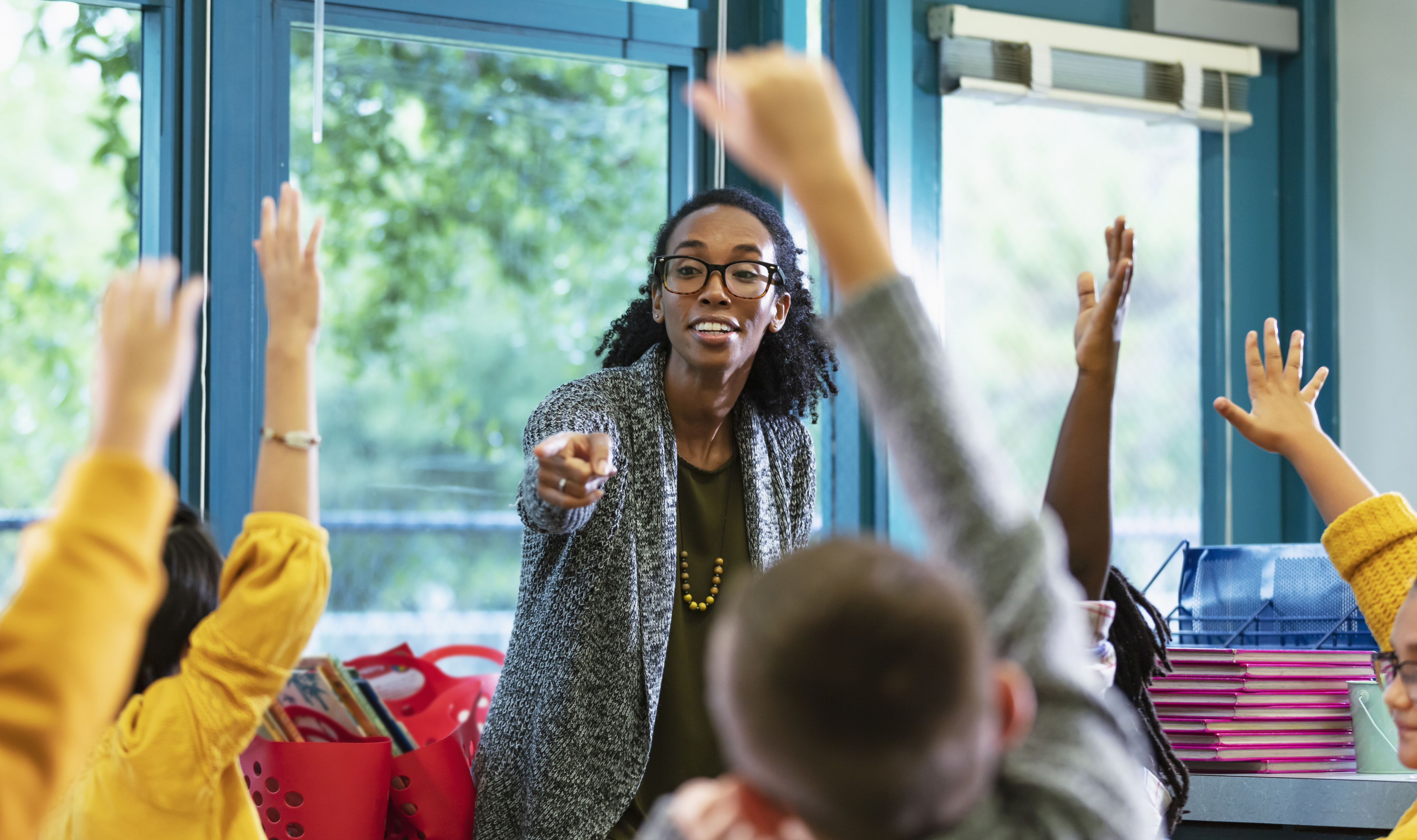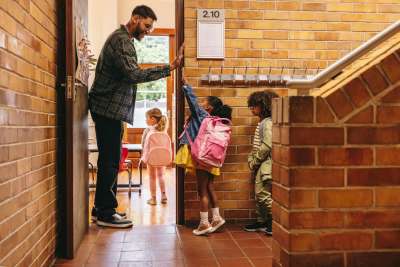Michelle Griczika (B.A.) is a certified educator with eight years of teaching experience in Massachusetts and has a foundation in classroom management.
Here Michelle shares her insights, tips, and teaching strategies to help fellow teachers start the first week of school feeling confident and prepared. Read our blog for more teacher tips and professional development ideas for the upcoming school year.

As summer comes to an end, teachers are gearing up for another school year filled with excitement, challenges, and opportunities for growth. Starting the year strong is crucial for setting a positive tone that can carry through the rest of the year. A solid foundation helps to build a positive classroom culture, establish routines, and build strong relationships with students and families. Whether you're a new teacher or a veteran teacher, these tips can help you establish a positive and productive classroom environment that will benefit you and your students throughout the year.
Get Organized
The first day of school can be overwhelming, especially for new teachers, with many tasks to accomplish and things to prepare. Getting organized is crucial to starting the year strong and feeling in control. Read on for tips to help you get organized.
1. Organize your classroom and materials
A well-organized classroom can create a positive student learning environment. Take time to set up your classroom in a way that makes sense for you and your teaching style. Consider creating designated spaces for different areas of instruction, such as a reading nook or a science center. Organize your materials and supplies in a way that makes them easily accessible.
2. Create a daily routine and schedule
Managing your time well by establishing a daily routine and schedule can help you feel more in control and reduce stress. Plan out your day, including time for instruction, small-group work, and independent work. Consider setting aside specific times for grading, lesson planning, and other administrative tasks. Stick to your schedule as much as possible to establish consistency for you and your students.
3. Set goals for the year
Setting goals can help you stay focused and motivated throughout the year. Consider what you want to accomplish with your students, such as academic or behavioral goals. Break down large goals into smaller, actionable steps to help you stay on track. Regularly check in on your progress and adjust your goals as needed.
By getting organized, creating a daily routine and schedule, and setting goals for the year, you can start the school year feeling prepared and in control.
Build Positive Relationships
Building positive relationships with students and families is essential for good classroom management and helps you start the year strong. Positive relationships can help to create a supportive and productive learning environment, promote student engagement and motivation, and help to reduce disruptive behaviors. Here are some tips for building positive relationships from the beginning of the year.
1. Connect with students and families
Take the time to get to know your students and their families. Consider sending home a questionnaire or holding a meet-and-greet before school starts to learn more about your students' interests, strengths, and needs. Make an effort to greet students by name and show interest in their lives.
2. Create a positive classroom culture
Establishing a positive classroom culture can help to create a supportive and respectful learning environment. Consider creating classroom rules together with your students and celebrating successes and achievements. Encourage kindness and empathy, and model positive behavior for your students.
3. Tips for effective communication
Communication is key to building positive relationships with students and families. Consider using various communication methods like email, phone calls, or parent-teacher conferences. Be clear and concise in your communication, and listen actively to what others say. Be open and honest about student progress and challenges.
By connecting with students and families, creating a positive classroom culture, and using effective communication, you can build positive relationships that will benefit you and your students throughout the year.
Plan Engaging Lessons
One of the keys to starting the year strong is to plan lessons that will capture students' attention and motivate them to learn. Read on for ways to create engaging lessons for any grade level or subject area.
1. Create a curriculum map
A curriculum map is a high-level overview of what will be taught during the year, broken down by units or topics. Creating a curriculum map can help you ensure you cover all the necessary material and pace yourself appropriately.
2. Plan challenging lessons
Consider what will be most interesting and relevant to your students. Use various teaching methods, such as group work, discussions, and hands-on activities, to help students stay engaged. Ensure the content is appropriately challenging but not too difficult for students to understand.
3. Incorporate technology into lessons
Technology can be a powerful tool for engaging students and enhancing learning. Consider incorporating technology into your lessons, such as interactive whiteboards, educational apps, or online resources.
By planning engaging lessons that are relevant and challenging, you can motivate your learners and set them up for success throughout the school year.
Address Student Needs
To be an effective teacher, it's important to recognize that every student has unique needs and learning styles. Here are some top tips for addressing student needs.
1. Identify and address students' individual needs
Get to know your students and their learning styles. Consider their interests, strengths, and weaknesses when planning lessons and assignments. Create opportunities for regular formative and summative assessment to track their progress. Offer extra help or support for students who are struggling.
2. Accommodations for students with special needs
Students with special needs may require accommodations to help them learn and succeed. Work with your school's special education team to develop accommodations supporting these students.
3. Building relationships with students who struggle behaviorally or academically
Students who struggle with behavior or academics may benefit from extra attention and support. Build positive relationships with these students and try to understand the underlying reasons for their struggles. Offer them opportunities to succeed and recognize their achievements.
By addressing the individual needs of your students, you can create a more inclusive and supportive classroom environment that promotes learning and success for all students.
Take Care of Yourself
Teaching is a demanding job that can easily lead to burnout if you don't care for yourself. Read on for ways to prioritize self-care as a classroom teacher.
1. Prioritizing self-care to avoid burnout
Take breaks throughout the day to recharge and avoid feeling overwhelmed. Engage in stress-reducing activities such as exercise or meditation, and practice self-compassion and mindfulness.
2. Finding a balance between work and personal life
Set boundaries and manage your workload to avoid bringing work home with you. Make time for hobbies, socializing, and other activities that bring you joy and fulfillment outside work. This can be particularly challenging for first year teachers, but also more experienced teachers too.
3. Utilizing school resources such as counseling or wellness programs
Many schools offer resources such as counseling services or wellness programs for their staff. Take advantage of these resources to support your mental and emotional well-being.
By prioritizing self-care and balancing work and personal life, you can avoid burnout and become an effective and fulfilled teacher. Remember that taking care of yourself is essential for your well-being and your students' success.
Best Advice for Back To School
Starting the school year strong is important for setting a positive tone for the rest of the year. That said, don’t forget that things don’t always go to plan, and it’s okay to make mistakes and learn from them. Use these tips and strategies to help you feel more confident and prepared for the challenges that lie ahead.
Remember that being kind to yourself, focusing on your well-being, and prioritizing self-care are necessary for you can be at your best to support your students and help them succeed. So, stay positive and enjoy the journey of another school year!












